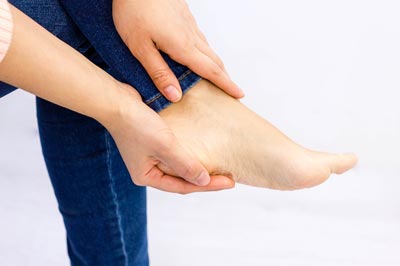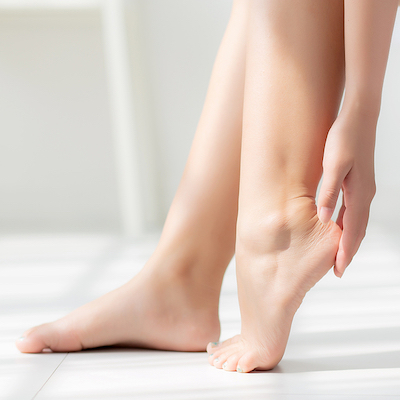Preventing Achilles Tendinitis: Tips and Exercises
Imagine lacing up your running shoes, energized and ready to tackle the day’s workout, only to be sidelined by a sharp pain at the back of your heel. Or envision planning a hiking trip, excited to conquer new trails, but hampered by a persistent ache that keeps you from reaching your goals. Achilles tendinitis is a common yet debilitating condition that can abruptly halt your active lifestyle. But here’s the good news: with the right strategies and exercises, it’s entirely preventable. In this article, we will dive into actionable tips and targeted exercises designed to keep Achilles tendinitis at bay, ensuring you stay on track with your fitness journey.
Warm-Up Properly: Setting the Stage for Success
Preventing Achilles tendinitis, a condition characterized by pain and inflammation of the Achilles tendon, begins with incorporating proper warm-up routines into your exercise regimen. Warming up properly sets the stage for success by preparing your muscles, tendons, and joints for the upcoming physical activity. A good warm-up increases blood flow to the muscles, raises body temperature, and enhances muscle elasticity, reducing the risk of injuries. For those specifically aiming to prevent Achilles tendinitis, focusing on dynamic stretches and exercises that target the calf muscles and Achilles tendon is essential. Activities such as light jogging or marching in place, followed by dynamic calf stretches, can help gradually increase flexibility and strength in the lower legs.
Dynamic stretching involves moving parts of your body and gradually increasing reach, speed, or both. Exercises like calf raises, ankle circles, and toe walks are excellent for this purpose. Calf raises strengthen the gastrocnemius and soleus muscles while promoting greater flexibility in the Achilles tendon. Ankle circles help improve the range of motion and lubricate the ankle joint, which can reduce the tension on the Achilles tendon during more intense activities. Toe walks, where you walk on your toes for short distances, engage the calf muscles and help improve balance and stability. Incorporating these exercises into your warm-up routine not only prepares your body for physical activity but also reinforces the health and resilience of the Achilles tendon.
In addition to dynamic stretching, incorporating sport-specific drills into your warm-up can further enhance readiness and prevent Achilles tendinitis. For runners, this might include high knees, butt kicks, and leg swings, which mimic the movements performed during running but at a lower intensity. These drills help fine-tune neuromuscular coordination and prepare the tendons and muscles for the specific demands of your activity. By taking the time to warm up properly, you create an optimal physiological environment for performance and significantly reduce the risk of developing Achilles tendinitis. Ultimately, a well-executed warm-up routine is a proactive step towards maintaining healthy tendons and ensuring a successful, injury-free workout.

Preventing Achilles Tendinitis
Gradual Progression: Avoiding Sudden Increases in Activity
Preventing Achilles tendinitis, a condition marked by inflammation and pain in the Achilles tendon, involves adopting strategies that minimize strain on the tendon. One of the most effective methods is to follow a principle of gradual progression in your physical activities. Sudden increases in intensity, duration, or frequency of exercise can overload the Achilles tendon, leading to microscopic tears and inflammation. By gradually increasing activity levels, you give your body ample time to adapt, strengthening the muscles and tendons while reducing the risk of injury. This approach is particularly important for individuals returning to exercise after a break or those intensifying their training regimen.
To implement gradual progression effectively, it is vital to monitor and adjust your exercise routines carefully. For instance, if you are a runner, increase your weekly mileage or running intensity slowly, typically by no more than 10% per week. This allows your tendons and muscles sufficient time to recover and adapt to the increased load. Incorporating rest days into your training schedule is equally crucial, as it ensures that your body has the necessary time to repair and strengthen itself between workouts. Cross-training with low-impact activities like swimming or cycling can also provide a break from repetitive stress while maintaining overall fitness.
Listening to your body is essential in preventing Achilles tendinitis through gradual progression. Pay attention to any signs of discomfort or fatigue in the Achilles region and adjust your activities accordingly. Ignoring early warning signs can lead to exacerbation of the condition, making recovery longer and more challenging. Employing proper techniques and using supportive footwear can further aid in distributing forces evenly across the foot and minimizing undue stress on the tendon. By adhering to a gradual approach in increasing your activity levels, you can build strength and endurance safely, significantly reducing the risk of developing Achilles tendinitis and ensuring long-term tendon health.
Proper Footwear: Supporting Your Every Step
One of the most crucial factors in preventing Achilles tendinitis is wearing proper footwear that provides adequate support for your feet. Shoes that are well-fitted and designed to support the arches, cushion the heel, and maintain proper alignment of the foot can significantly reduce the strain on the Achilles tendon. Proper footwear helps distribute pressure evenly across the foot, minimizing the risk of overloading any specific area, particularly the Achilles tendon. When shoes lack necessary support or cushioning, it can lead to improper foot mechanics, contributing to increased tension on the tendon and eventually causing inflammation and pain.
Selecting the right shoes involves considering several key features. Look for shoes that offer good arch support to prevent excessive pronation or supination, which are common contributors to Achilles tendinitis. Cushioned soles help absorb shock during high-impact activities such as running or jumping, reducing the impact on the heel and Achilles tendon. Additionally, a firm heel counter—a component in the back of the shoe that provides stability—can help secure the heel in place and prevent excessive movement that might strain the tendon. For athletes or individuals engaged in regular physical activity, investing in sport-specific footwear designed for their particular activities can provide tailored support and protection.
In addition to choosing the right shoes, it’s essential to replace them regularly to ensure they continue to provide adequate support. Over time, the cushioning materials and structural components of shoes break down, diminishing their effectiveness. A general rule of thumb is to replace athletic shoes every 300-500 miles, or sooner if you notice signs of wear such as uneven tread patterns or decreased cushioning. Rotating between different pairs of shoes can also help extend their lifespan and provide consistent support. By prioritizing proper footwear, individuals can take a significant step towards preventing Achilles tendinitis, maintaining healthy foot mechanics, and supporting their overall physical well-being.

Supportive Footwear for Achilles Tendinitis
Strengthening Exercises: Building Resilience in Your Tendons
Preventing Achilles tendinitis, a condition characterized by inflammation and pain in the Achilles tendon, involves incorporating specific strengthening exercises into your routine. Strengthening exercises are crucial for building resilience in your tendons, enhancing their ability to withstand stress and reducing the risk of injury. One of the most effective exercises for this purpose is the eccentric calf raise. This exercise focuses on lengthening the Achilles tendon under tension, promoting collagen production and improving tendon strength. To perform an eccentric calf raise, stand on the edge of a step with your heels hanging off, raise both heels, then slowly lower one heel below the step while keeping the other foot lifted. Repeat this motion, ensuring controlled movements to maximize benefits.
In addition to eccentric calf raises, incorporating other exercises that target the lower leg muscles can further enhance tendon resilience. Seated calf raises, where you sit on a chair with weights on your knees and raise your heels off the ground, are excellent for isolating and strengthening the soleus muscle, a key supporter of the Achilles tendon. Another beneficial exercise is the single-leg balance, which improves stability and engages the calf muscles. Stand on one leg and hold the position for 30 seconds, gradually increasing the duration as your balance improves. These exercises not only fortify the Achilles tendon but also contribute to overall lower leg strength and stability, which are critical for preventing injuries.
Consistency and progression are essential when incorporating these strengthening exercises into your regimen. Start with a manageable number of repetitions and sets, gradually increasing them as your tendons and muscles adapt. Aim to perform these exercises at least two to three times a week to maintain and build tendon strength. Additionally, always combine strengthening exercises with proper warm-up routines to prepare your muscles and tendons for activity. By systematically integrating these exercises into your fitness routine, you can significantly reduce the risk of Achilles tendinitis and ensure that your tendons remain strong and resilient, ready to handle the demands of your physical activities.
Stretching and Flexibility: Maintaining Optimal Range of Motion
Stretching and flexibility exercises play a pivotal role in preventing Achilles tendinitis by maintaining an optimal range of motion in the ankle and surrounding muscles. Regularly stretching the calf muscles can help alleviate tightness, reducing the strain on the Achilles tendon during physical activities. One effective stretch is the standing calf stretch, which targets both the gastrocnemius and soleus muscles. To perform this stretch, stand facing a wall with one foot forward and the other leg extended back, keeping both heels on the ground. Lean forward slightly, bending the front knee until you feel a gentle stretch in the calf of the rear leg. Hold this position for 20-30 seconds, then switch legs and repeat.
Incorporating dynamic stretching into your routine can further enhance flexibility and prepare the tendons for movement. Dynamic stretches, such as ankle circles and toe touches, involve controlled, smooth movements that gradually increase the range of motion. Ankle circles, where you rotate your foot in circular motions while seated or standing, help lubricate the ankle joint and improve mobility. Toe touches, performed by gently reaching for your toes while keeping your legs straight, target the hamstrings and lower back, indirectly benefiting the Achilles tendon by promoting overall lower body flexibility. These stretches should be performed before engaging in physical activity to warm up the muscles and tendons, reducing the risk of injury.
Maintaining flexibility through regular stretching not only prevents Achilles tendinitis but also enhances overall performance in physical activities. Consistent practice of these exercises helps keep the muscles and tendons pliable, allowing for better shock absorption and reduced tension on the Achilles tendon. Additionally, incorporating yoga or Pilates into your fitness regimen can offer comprehensive flexibility benefits, as these practices emphasize controlled stretching and balance. By prioritizing stretching and flexibility, you create a more resilient musculoskeletal system, ultimately safeguarding your Achilles tendon from overuse injuries and ensuring sustained mobility and function throughout your active lifestyle.

Exercise for Achilles Tendinitis
Cross-Training: Diversifying Your Workouts
Preventing Achilles tendinitis, a common overuse injury characterized by pain and inflammation in the Achilles tendon, requires strategic exercise planning. One highly effective strategy is cross-training, which involves diversifying your workouts to avoid repetitive stress on the tendon. Cross-training allows you to maintain overall fitness while reducing the strain on specific muscle groups and tendons. For instance, runners who are prone to Achilles tendinitis can benefit from incorporating low-impact activities such as swimming, cycling, or elliptical training into their routines. These activities provide excellent cardiovascular benefits without the high impact of running, allowing the Achilles tendon to rest and recover.
Incorporating a variety of exercises in your training regimen not only reduces the risk of overuse injuries but also enhances overall athletic performance. Each type of exercise targets different muscle groups and improves various aspects of physical fitness, such as strength, flexibility, and endurance. For example, swimming engages the upper body and core while providing a full-body workout that minimizes stress on the lower limbs. Cycling focuses on the quadriceps and hamstrings, promoting balanced muscle development and reducing the imbalance that often contributes to Achilles tendinitis. Additionally, activities like yoga or Pilates can improve flexibility and balance, further protecting the Achilles tendon from undue stress.
Implementing a well-rounded cross-training routine requires careful planning and consistency. Aim to engage in a mix of high-impact and low-impact activities throughout the week, ensuring that no single muscle group or tendon is overworked. Listen to your body and adjust your workouts based on how you feel, particularly if you experience any discomfort in the Achilles region. Rest days are equally important, providing essential recovery time for your muscles and tendons. By embracing cross-training, you can create a balanced and sustainable exercise program that supports injury prevention, enhances overall fitness, and promotes long-term musculoskeletal health.
Listen to Your Body: Recognizing Early Warning Signs
Preventing Achilles tendinitis, a common condition marked by pain and inflammation in the Achilles tendon, starts with listening to your body and recognizing early warning signs. The Achilles tendon is susceptible to overuse injuries, especially in activities that involve repetitive stress, such as running or jumping. Early symptoms might include mild discomfort or stiffness in the back of the heel, particularly after periods of inactivity or first thing in the morning. Paying attention to these early signals allows you to take proactive steps to address the issue before it escalates into a more serious injury. Ignoring these signs can lead to chronic pain and longer recovery times.
When you notice early signs of Achilles tendinitis, it’s crucial to modify your activities and allow time for recovery. Reducing the intensity, frequency, or duration of your workouts can help alleviate stress on the tendon. Incorporating rest days into your training schedule gives your body the necessary time to heal and prevents further damage. Applying ice to the affected area, performing gentle stretching exercises, and using over-the-counter anti-inflammatory medications can also help manage initial symptoms. Additionally, consider seeking advice from a healthcare professional if the pain persists or worsens, as they can provide tailored Achilles tendinitis treatment plans and recommendations.
Long-term prevention of Achilles tendinitis involves adopting a holistic approach that includes proper warm-ups, gradual progression in training, appropriate footwear, and cross-training. However, consistently listening to your body remains one of the most effective strategies. Regularly assess how your Achilles tendon feels during and after exercise, and don’t hesitate to take breaks or adjust your routine based on your body’s feedback. By staying attuned to your body’s signals and addressing potential issues early, you can maintain healthy tendons and reduce the risk of developing Achilles tendinitis, ensuring a more sustainable and enjoyable fitness journey.

Achilles Tendinitis Prevention
Conclusion
Achilles tendinitis doesn’t have to be an inevitable part of an active lifestyle. By implementing proper warm-up techniques, gradually increasing activity levels, wearing suitable footwear, incorporating strengthening and stretching exercises, embracing cross-training, and listening to your body, you can significantly reduce the risk of developing this painful condition. Empower yourself with these preventive strategies, and enjoy a healthier, more resilient approach to your fitness journey. Here’s to pain-free adventures and achieving your personal best!
Flagstaff Foot Doctors: Anthony Rosales DPM
https://www.google.com/maps?cid=8835841318590452161
421 N Humphreys St, Flagstaff, AZ 86001, United States
(928) 774-4825
https://flagstafffootandankle.com/
